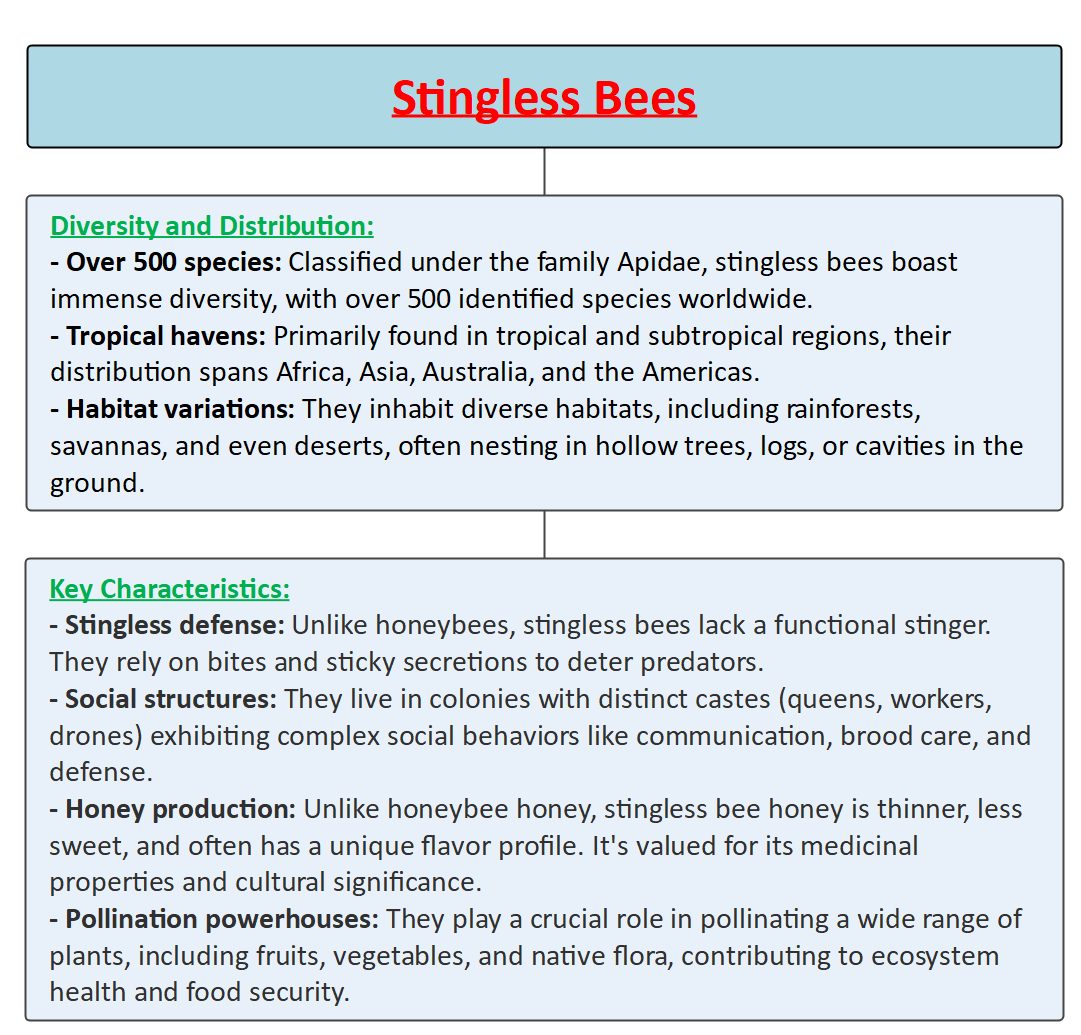Description

Copyright infringement not intended
Picture Courtesy: https://www.boredpanda.com/stingless-sugarbag-bees-spiral-hives-australia/
Context: In Peru, deforestation poses a threat to the diverse species of stingless bees in the Amazon, putting native pollinators at risk of extinction.
Key Highlights
- Stingless bees are native to the Amazon and play a vital role in pollinating the region's flora. Unlike honey bees from Africa and Europe, stingless bees do not sting, and their honey is used for medicinal purposes by Indigenous communities.
- Deforestation for agriculture and ranching poses a significant threat to native pollinators like stingless bees. Other threats include pesticides, climate change, and competition with honey bees, which are better adapted to agricultural areas.
Threats and Conservation
- Habitat loss: Deforestation and habitat degradation are major threats, reducing nesting sites and food sources.
- Pesticide use: Chemical use in agriculture harms stingless bee populations, impacting their health and foraging ability.
- Climate change: Rising temperatures and changing weather patterns disrupt their life cycle and distribution.
- Competition: Introduced honeybees can outcompete native stingless bees for resources, further threatening their populations.

Conservation Efforts
- Meliponiculture: The practice of raising stingless bees in managed hives is gaining traction, providing income for communities and boosting bee populations.
- Habitat restoration: Protecting and restoring natural habitats is crucial for providing nesting sites and food sources for stingless bees.
- Educational initiatives: Raising awareness about the importance of stingless bees and promoting sustainable practices is essential for their conservation.
- Indigenous knowledge: Integrating traditional knowledge and practices of Indigenous communities who have long coexisted with stingless bees is crucial for successful conservation efforts.

|
PRACTICE QUESTION
Q. Technological advancements like green energy and carbon capture technologies offer potential solutions to environmental challenges. However, they also raise ethical concerns and potential unintended consequences. How to harness technology responsibly and ethically for environmental solutions without exacerbating existing inequalities or creating new problems?
|













